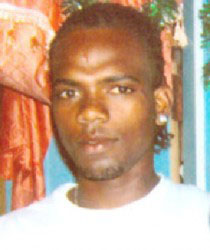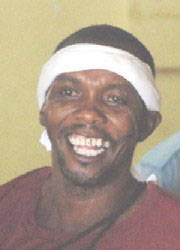A 12-member jury, on Wednesday acquitted Quaison Jones, called ‘Blondie’, at the end of his retrial for the murder of his fellow fish cleaner, Marlon Greene.
The offence for which Jones was charged, occurred on January 17, 2011, at the Meadow Bank wharf.
Jones’ retrial took place before Justice James Bovell-Drakes and a 12-member mixed jury, while the case was prosecuted by state prosecutors Tamieka Clarke and Tiffini Lyken.

In June of 2014, Jones was found guilty of the murder of Marlon Greene but had maintained that it was not he who had committed the crime.
Leading his defence with an unsworn statement during the High Court trial, Jones had said that he did not kill Greene and that he never had any problems with him.
The court had, however, heard from a witness that the two men had an argument at the Meadow Bank wharf, during which Greene was stabbed multiple times. He subsequently died from the injuries inflicted.
Pathologist Dr. Nehaul Singh had testified that Greene’s jugular vein and windpipe were severed. He had also told the court that Greene died as a result of haemorrhage and shock due to multiple stab wounds.
On December 20, 2018, the Guyana Court of Appeal ordered a retrial of the matter, stating that trial judge Navindra Singh failed to sufficiently put Jones’ defence of self defence to the jury.
The court’s ruling was made by acting Chancellor Yonette Cummings-Edwards, who explained that contrary to the trial judge’s finding, self defence arose on the evidence, and as such, the jury ought to have been directed accordingly.
Jones was sentenced to 57 years in prison for Greene’s murder in June 2014.
In his appeal of the conviction and sentence, Jones, through his attorneys Ronald Burch-Smith and Keoma Griffith, had argued among other things, that Justice Singh did not properly put his case of self defence to the jury, in accordance with the law.
Noting the trial judge’s contention that self defence did not arise, Chancellor Cummings-Edwards said that a careful examination of the evidence presented at trial clearly suggests otherwise.
It was against this background she said that it was for the jury to be given the necessary directions by Justice Singh on how to treat with this defence, and thereafter, leave the fact-finding circumstances for their deliberation.
She reminded that as the arbitrators of fact, it was the duty of the jury to determine whether the appellant would have acted in self defence as he claims, and not for the trial judge to decide.
Referencing case law authorities, the chancellor said that once it can be found that the defence “reasonably arises on the evidence, and is not speculative,” then a trial judge must accordingly direct the jury.
She emphasized that a trial judge is not to usurp the fact-finding authority of the jury.






